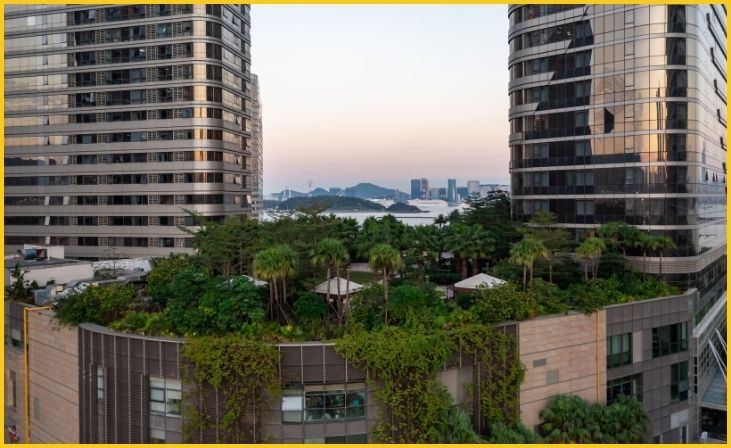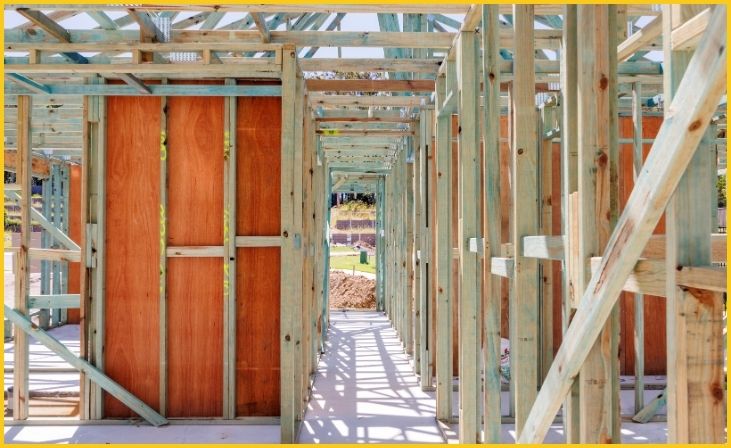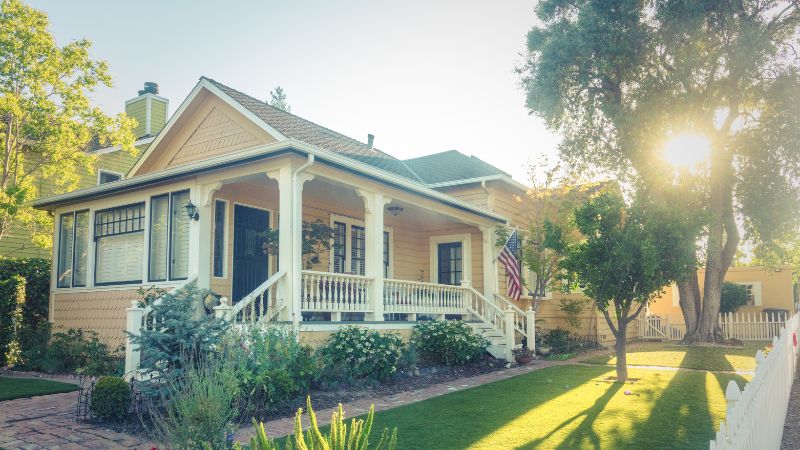In recent years, the demand for sustainable and eco-friendly construction methods has surged as environmental concerns have grown. Construction practices that once focused solely on durability and cost-effectiveness now also prioritize minimizing environmental impact, energy consumption, and waste generation. With innovations in materials, designs, and techniques, modern builders can now create structures that are not only efficient and durable but also environmentally responsible. Below, we explore the top nine sustainable and eco-friendly construction methods that are transforming the building industry.
Why Sustainable Construction Matters?
As the world grapples with the challenges of climate change, environmental degradation, and resource depletion, the construction industry is shifting its focus towards sustainable and eco-friendly practices. With the built environment accounting for nearly 40% of global energy consumption and 30% of greenhouse gas emissions, it’s essential to adopt construction methods that minimize environmental impact while promoting social responsibility and economic viability.
How Sustainable Construction Methods Benefit the Environment
Eco-friendly construction methods directly contribute to environmental preservation. By incorporating sustainable materials like bamboo, recycled steel, and hempcrete, builders can significantly reduce deforestation and pollution. Furthermore, systems such as rainwater harvesting, passive solar design, and energy-efficient insulation help lower energy and water consumption.
These techniques reduce greenhouse gas emissions, conserve natural resources, and decrease dependency on non-renewable energy sources. Additionally, buildings constructed using these methods are designed to last longer, reducing the need for frequent repairs or replacements, which in turn lowers the environmental impact over time.
Sustainable and Eco-Friendly Construction Methods
1. Green Roofs and Living Walls

Green roofs and living walls are innovative approaches to enhance the sustainability of urban environments. By integrating vegetation into building structures, these methods provide significant environmental benefits and contribute to improved air quality.
| Advantages | Benefits |
|---|---|
| Enhanced insulation | Reduces energy costs and reliance on heating/cooling systems. |
| Improved air quality | Plants absorb CO2 and release oxygen, purifying the surrounding air. |
| Stormwater management | Green roofs absorb rainwater, reducing runoff and flooding risks. |
Benefits of Green Roofs and Living Walls:
- Energy Efficiency: Buildings with green roofs experience reduced heat absorption, lowering cooling needs in summer.
- Biodiversity: These structures create habitats for birds, insects, and other wildlife, contributing to urban biodiversity.
- Aesthetic Appeal: Besides environmental benefits, living walls and green roofs enhance the beauty of buildings.
2. Recycled Materials
Using recycled materials in construction is an effective way to reduce resource depletion and minimize waste. From recycled concrete to reclaimed wood, materials that would otherwise end up in landfills can be repurposed for new projects.
| Material | Application | Environmental Impact |
|---|---|---|
| Recycled concrete | Used in foundations and roadways. | Reduces need for new concrete, lowering CO2 emissions. |
| Reclaimed wood | Furniture, floors, and structural elements. | Reduces deforestation and preserves natural habitats. |
| Recycled steel | Structural framing for buildings. | Saves energy by reducing the need for mining and refining. |
Advantages:
- Reduces waste: Recycling construction materials keeps debris out of landfills and reduces the need for new raw materials.
- Cost-effective: Recycled materials are often cheaper than new materials, cutting overall project costs.
- Conserves resources: It helps conserve non-renewable resources such as minerals, metals, and fossil fuels.
3. Modular and Prefabricated Construction
Modular and prefabricated construction involves assembling building components in a controlled factory setting before transporting them to the construction site. This process is more efficient, environmentally friendly, and results in minimal waste.
| Benefits of Modular Construction | Impact |
|---|---|
| Faster construction time | Reduces labor hours and energy consumption on-site. |
| Less material waste | Precise measurements reduce excess waste and resource use. |
| Controlled environment reduces weather-related delays | Ensures projects stay on schedule, minimizing environmental impact. |
Key Advantages:
- Energy Efficiency: Prefabrication reduces on-site energy consumption since most of the work is done off-site.
- Reduced Waste: Precise construction in factories ensures that fewer materials are wasted.
- Scalability: Modular units can be easily scaled up or down depending on project requirements.
4. Bamboo and Hempcrete Construction
Bamboo and hempcrete are sustainable alternatives to traditional building materials like steel, concrete, and timber. These materials offer several advantages for eco-conscious builders.
| Material | Advantages | Sustainability Benefits |
|---|---|---|
| Bamboo | Lightweight, strong, and rapidly renewable. | Bamboo grows quickly, reducing deforestation. |
| Hempcrete | Natural insulation, fire-resistant. | Absorbs carbon dioxide during its curing process. |
Bamboo Benefits:
- Rapid Growth: Bamboo grows faster than traditional timber, making it a renewable and sustainable option.
- Durability: Bamboo’s strength rivals that of steel, making it an ideal material for structural use.
Hempcrete Benefits:
- Energy-efficient Insulation: Hempcrete provides excellent insulation, reducing the need for artificial heating and cooling.
- Carbon Sequestration: Hempcrete actively absorbs CO2 during its curing process, offsetting carbon emissions from construction.
Also, Read – Top 10 Modern New Home Construction Design Trends 2024
5. Passive Solar Design

Passive solar design involves orienting a building to make the most of natural sunlight and heat, reducing reliance on artificial lighting, heating, and cooling systems. This method utilizes architectural elements like windows, shading devices, and thermal mass to harness the sun’s energy.
| Passive Solar Strategy | Impact |
|---|---|
| South-facing windows | Maximizes sunlight during winter months, reducing heating needs. |
| Thermal mass materials (e.g., concrete) | Absorbs heat during the day and releases it at night, regulating indoor temperature. |
| Solar shading (e.g., overhangs) | Prevents overheating in summer by blocking direct sunlight. |
Benefits:
- Energy Efficiency: Reduces reliance on HVAC systems, lowering energy consumption.
- Cost Savings: Passive solar design cuts down energy bills by utilizing natural resources.
- Comfort: Ensures buildings maintain a stable indoor temperature year-round.
6. Low-VOC Materials
Volatile Organic Compounds (VOCs) are chemicals that off-gas from traditional building materials like paint, adhesives, and finishes. Low-VOC materials reduce harmful emissions and improve indoor air quality.
| Traditional Material | Low-VOC Alternative |
|---|---|
| Standard paints and coatings | Low-VOC or zero-VOC paints and coatings. |
| Formaldehyde-based adhesives | Formaldehyde-free adhesives. |
| Vinyl flooring | Natural linoleum or bamboo flooring. |
Advantages:
- Healthier indoor air: Low-VOC materials reduce exposure to toxic chemicals, promoting healthier living environments.
- Sustainability: Low-VOC products typically have fewer environmental impacts during production.
- Compliance: Many building certifications (such as LEED) require the use of low-VOC materials to meet environmental standards.
7. Rainwater Harvesting Systems
Rainwater harvesting involves collecting and storing rainwater for later use, reducing the demand on municipal water supplies and minimizing the environmental impact of water use.
| Components | Function |
|---|---|
| Collection system (e.g., roof gutters) | Directs rainwater into storage tanks. |
| Storage tanks | Stores rainwater for future use, such as irrigation or flushing toilets. |
| Filtration system | Filters collected rainwater to ensure cleanliness for non-potable uses. |
Advantages:
- Water Conservation: Reduces the demand for freshwater by utilizing rainwater for non-potable purposes.
- Cost Savings: Rainwater harvesting systems lower water bills, particularly in areas with high water rates.
- Environmental Benefits: Decreases the strain on local water supplies and reduces stormwater runoff that can contribute to erosion and water pollution.
8. Earthship Construction
Earthship construction uses natural and recycled materials, such as tires filled with earth, bottles, and cans, to create energy-efficient homes. These off-grid structures are designed to be self-sustaining and environmentally friendly.
| Earthship Features | Environmental Impact |
|---|---|
| Thermal mass from earth-filled tires | Provides natural insulation, reducing energy needs. |
| Solar and wind power systems | Enables off-grid living with renewable energy sources. |
| Water recycling systems | Reduces water consumption by reusing greywater for irrigation. |
Advantages:
- Off-grid Living: Earthships are designed to be fully self-sustaining, reducing dependence on external resources.
- Minimal Waste: Construction uses recycled materials, keeping waste out of landfills.
- Energy Efficiency: Earthship homes maintain stable indoor temperatures, reducing the need for heating or cooling systems.
9. Cross-Laminated Timber (CLT)

Cross-laminated timber (CLT) is a renewable building material made from layers of wood that are glued together. It is a strong and sustainable alternative to concrete and steel for structural elements.
| Advantages of CLT | Environmental Benefits |
|---|---|
| Lightweight yet strong | Reduces transportation emissions and energy consumption. |
| Carbon storage | Wood stores carbon, making CLT a carbon-neutral building material. |
| Renewable resource | Trees used for CLT can be sustainably harvested. |
Advantages:
- Reduced Carbon Footprint: CLT produces fewer carbon emissions during production compared to steel and concrete.
- Sustainable Harvesting: Wood used in CLT comes from managed forests, ensuring a renewable supply.
- Versatility: CLT can be used for various structural applications, from walls to floors and ceilings.
Conclusion
As the construction industry continues to evolve, sustainable and eco-friendly building methods are becoming more essential. From integrating green roofs to using recycled materials, these innovative approaches reduce environmental impact while maintaining the structural integrity and comfort of modern buildings. By incorporating sustainable practices like passive solar design, rainwater harvesting, and earthship construction, builders can create energy-efficient, cost-effective structures that benefit both the environment and the people who inhabit them.
Ultimately, the future of eco-friendly construction lies in the balance between innovation and sustainability. With more attention being given to the long-term environmental impact of building methods, these nine eco-friendly approaches serve as a blueprint for a more sustainable future in eco-friendly construction.


